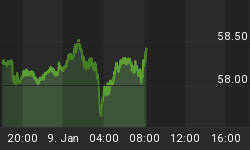The structure of today's credit markets is interesting. On top is the establishment's convictions that the Fed can infallibly set the right level of interest rates that will "keep the recovery going".
The result has been virtually chronic lending accommodation, which has fostered the biggest and most reckless financial party in history - the bender of last resort.
The business of arbitrarily manipulating interest rates has been on since the Fed opened its doors in early 1914. Two other equally arbitrary constructs are more recent and have become rather acute hazards. These are the now widely discussed, and in some quarters already dismissed as the worry-stuff that drives bull markets. The most egregious is the notion of pricing by a mathematical model, rather than by market transaction.
The last element in this trilogy of artifice is that rating agencies came up with a mathematical model to assign a credit rating to a bundle of securities of doubtful parentage.
Professor James Tobin was a leading interventionist economist until he passed away in 2002 at the age of 84. In the early 1980s he defined a bubble as: "Speculations on the speculations of other speculators who are doing the same."
No doubt he was thinking of the 1980 binge in metals, crude oil and real estate, and with no little irony it can be applied to the current establishment's trilogy of artifice.
Financial innovations to create credit out of thin air are always tempting but it takes a truly reckless culture to make it a tool of policy makers. It seems like another world away, but there was a time when such tools were shunned. Brokerage bucket shops flourished during the late 1800s. These store-front operations provided the retail account a way to play price changes of big board stocks without entering orders through the floor. Margins offered were as low as 1%. The operations were subject to manipulation in the "shop's" favour.
This form of unenforceable contract had earlier been seen as wonderful and then calamitous in the infamous Tulip Bubble of 1637 whereby the "Lunatic Fringe" brought down the senior economy, in a typical post-bubble contraction.
Now it seems that an experiment in credit innovation that would be scorned by earlier generations of bankers and financiers has become the financial culture of Academe, Main Street, as well as Wall Street. As with any intense speculation, participants can ardently believe the most preposterous story so long as the price is going up. Then the inevitable speculative exhaustion is followed by chagrin.
Belief in the Unholy Trinity of central banking, derivatives and artificial rating of credit is dependent upon an always rising price. In one sector - subprime - this is not the case as the BBB bond has plunged from 95 at the first of the year to 54.
Within this the plunge from 85 in late May is becoming severe and at what price below, say 85, can a BBB still be considered investment grade?
At what point does the establishment no longer believe that the subprime mess is isolated or can be contained?
And, at what point does the general public finally understand and condemn the Unholy Trinity?
















